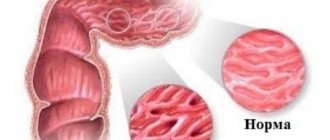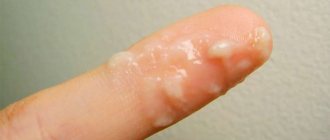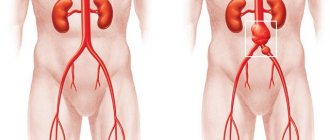One of the rare diseases that occurs in young children and the elderly is pneumatosis intestinalis. It is characterized by the fact that gases from the stomach do not leak through the mucous membrane and do not enter the circulatory system. As a result, they are retained in the gastrointestinal tract (GIT) and many cysts are formed. Sometimes their size reaches 1 cm in diameter.
The most advanced stage of this disease is manifested by an inflammatory process after the formation of cavities with a high concentration of gases.
Causes
Before moving on to a discussion of nutrition and treatment indicated for intestinal pneumatosis, it is necessary to answer the question of why this disease occurs.
The disease itself is very rare. Mostly occurs in older people and infants. Air cysts can range from 0.5 to 5 centimeters in diameter.
The disease rarely turns out to be an independent pathology. As a rule, pneumatosis is a consequence of primary damage to the gastrointestinal tract. The most common prerequisites are:
- Intestinal infections.
- Gastrointestinal tract tumors.
- Unhealthy Lifestyle.
- Nervous disorders.
- Gastrointestinal diseases of a different nature.
To date, it is not entirely clear by what mechanism pathological cysts are formed. However, the disease is not asymptomatic. It quickly makes itself felt. By what signs can you recognize its appearance? More on this later.
https://youtu.be/JUPGlHVoIG8
Diagnosis of pneumatosis
This disease does not have pronounced symptoms, so diagnosing it is sometimes difficult. If the patient has the first signs of illness, then it is necessary to contact a gastroenterologist. He will listen to complaints and take an anamnesis. After which he will palpate the abdominal area. When palpated, cavities will be found that are filled with air.
To confirm the diagnosis, the patient is prescribed one of the types of endoscopic examination. When examining the mucous membrane from the inside, you can see multiple sacs.
After this, an X-ray examination is performed using a contrast agent. To identify the cause of the disease, a biopsy is performed. That is, during colonoscopy or rectoscopy, material is taken from the mucous membrane.
Pneumatosis intestinalis on ultrasound
One method for detecting diverticulosis is ultrasound. By chance, a doctor may detect an accumulation of gases of various etiologies on an ultrasound of the small or large intestine. Intestinal pneumatosis is diagnosed on ultrasound by examining the gastrointestinal tract or abdominal cavity. Ultrasound examination is carried out on an empty stomach, 2 days before the procedure you need to exclude foods that lead to gas formation: raw vegetables, beans, milk, brown bread.
Intestinal palpation
In some cases, a gastroenterologist will be able to detect diverticulosis in a patient without laboratory testing, by palpation of the abdomen. This happens rarely, but it is possible: air bubbles in the intestinal area can be felt. Active palpation of the intestine reveals a cyst-pouch. Such cysts are arranged in rows; when palpated, you can hear the sound of bursting gas and air bubbles.
Symptoms
The clinical picture always depends on how widespread the gas cavities are and in what quantity. Most often, patients complain of the following manifestations:
- Discomfort in the intestinal area (this is manifested by stretching of the walls).
- Nausea and vomiting.
- Severe colic.
- Paleness of the skin.
- Belching.
- Diarrhea or constipation.
- Pain of a cramping nature.
- Intestinal obstruction
- A sharp deterioration in health.
If there are prerequisites for the appearance of gas cysts, and the listed symptoms do not go away for a long time, you should consult a doctor. The most effective treatment for pneumatosis intestinalis can only be prescribed by a doctor after conducting a detailed diagnosis. And only if he approves, you can resort to folk remedies. And now we can talk about them in more detail.
Associated symptoms
Since pneumatosis is more of a symptom or complication, its symptoms are directly related to the clinical picture of the underlying disease.
Nonspecific manifestations of pneumatosis include:
- periodic cramping pain in the abdomen without clear localization;
- nausea, vomiting;
- belching with an unpleasant (rotten) odor;
- feeling of heaviness and discomfort;
- violation of the act of defecation in the form of constipation;
- the appearance of mucus in the stool.
We recommend reading:
How to check the intestines for oncology?
The diffuse distribution of gases leads to a deterioration in the general condition of the patient: weakness, pale skin appears, systemic pressure decreases and at the same time the pulse increases.
Dandelion
This plant is rich in valuable substances and elements that the body needs. Dandelion contains calcium, sodium, phosphorus, potassium, magnesium, iron, copper, zinc, selenium, manganese, beta-carotene, thiamine, various acids, etc.
The root of this plant is used in the treatment of pneumatosis intestinalis with folk remedies. To prepare a healing infusion, you need to follow simple steps:
- Grind the dandelion roots. You should get 2 tsp.
- Pour this mixture with boiled chilled water (1 cup).
- Leave to infuse overnight.
Then filter and take 50 ml before meals. There should be enough volume for 4 doses. There is no need to prepare a lot of infusion at once; it is better to make fresh one every day.
Parsley seeds
Since we are talking about the treatment of intestinal pneumatosis with folk remedies, then this phytocomponent should be noted with attention. The composition includes vitamins PP and C, folic acid, essential oils, inulin, selenium, phosphorus, iron, magnesium, calcium, selenium.
Parsley seeds improve the functioning of the thyroid gland, gastrointestinal tract and adrenal glands, destroy pathogenic microflora, remove waste and toxins from the body, and normalize sugar levels.
The medicine is prepared from them in a few simple steps:
- Parsley seeds (20 g) pour a glass of cold water.
- Place on the fire for half an hour and heat.
- Strain.
You need to drink this remedy every 4 hours, 1 tbsp. l.
Chamomile
The substances that make up this popular phyto-component perfectly disinfect, eliminate cramps and gas formation in the intestines.
Chamomile also helps improve appetite, enhances the secretion of bile and gastric juice, having a gentle effect on the mucous membrane. It seems to envelop the intestines, reducing its sensitivity and irritability.
It is often used in folk remedies. Intestinal pneumatosis, gastritis, flatulence, colitis - chamomile helps to cope with various ailments. And it is very easy to make a healing decoction from it. The steps are as follows:
- Pour two pinches of dried flowers into one glass of water.
- Send to the fire.
- Boil for 5 minutes.
- Let it brew for a few hours.
You should drink this decoction immediately before meals. 2-3 sips are enough.
Prerequisites for pneumatosis of the intestinal tract
Pneumatosis of the intestinal loops is formed due to the accumulation of gases and the inability to absorb them into the blood. Thus, gas accumulations are not removed, forming air cavities on the intestinal mucosa. Other factors in the development of the anomaly are the penetration of air from the stomach into the intestinal walls and improper development of lymphatic capillaries. Other causes of pneumatosis:
- lesions of the large and small intestine due to contagious languid diseases of the intestinal tract, in which gas is a product of the vital activity of pathogenic bacteria and remains in the warped walls of the organ (Proteus, E. coli);
- low mobility of children at an early age;
- gases are not released through natural openings;
- violation of peristalsis;
- digestive obstruction;
- digestive cramps;
- increased intra-abdominal pressure.
Pneumatosis of the intestinal tract in a baby
The anomaly occurs in children with digestive obstruction after surgery. Severe pneumatosis of the intestinal tract in a baby affects the tone and reduces intestinal motility. In infants, this disease may appear due to low mobility or abnormalities of the gastrointestinal tract. If a huge accumulation of gases is detected in the abdominal cavity during an ultrasound examination, the pediatrician or gastroenterologist prescribes the child drugs that reduce gas accumulation in order to avoid severe complications, and massage.
Pneumatosis of the intestinal tract during pregnancy
Digestive emphysema, pneumatosis during pregnancy, appears due to a malfunction of the gastrointestinal tract or diseases such as colitis or enteritis. For pregnant women, when this anomaly appears, the question may arise: how will the anomaly affect the health of the unborn baby? The digestive bacillus found in diverticulosis can enter the newborn's body during childbirth, which threatens the development of meningitis. Therefore, if the source of pneumatosis is pathogenic bacteria, it is better to start treatment early to avoid possible consequences.
Dill seeds
Continuing to study the topic concerning the symptoms and treatment of pneumatosis intestinalis, it is necessary to discuss the remedy prepared on the basis of this phytocomponent.
Dill seeds contain vitamins C, A, B, various acids (palmitic, linoleic and oleic), essential oils, as well as macro- and microelements.
They are even used to prepare medications to help cope with pancreatitis. Dill seeds neutralize putrefactive processes in the intestines, normalize microflora, remove toxins and waste, promote the secretion of bile and gastric juice, and even increase acidity.
But you just need to take 1 tsp. this component and pour boiled water (you need half a glass). Infuse for 15 minutes and then drink. And so at least 3 times a day.
What is pneumatosis intestinalis?
Many people are interested in the question: pneumatosis intestinalis, what kind of disease it is and how to treat it correctly. It is diagnosed in older people, small children and infants.
The disease is associated with the accumulation of gases in the stomach, which, penetrating through the mucous membrane, enter the blood circulation, provoking the formation of cysts.
If treatment is not timely, inflammatory processes occur in the cavities where an increased amount of gases is concentrated.
Causes of pneumatosis intestinalis
The main cause of the development of pneumatosis is disorders in the digestive system
, resulting in increased accumulation of gases.
The appearance of the disease is influenced by the following factors:
- if in childhood the child suffered serious intoxication of the body;
- if there is severe hypotension of intestinal peristalsis, which causes a strong accumulation of gases in the colon area;
- if there are strong spasms in the intestines that do not allow gases to escape on their own. This subsequently leads to the formation of cysts;
- any intestinal obstruction;
- food poisoning;
- eating disorders provoke pneumatosis;
- infectious diseases of the large and small intestines;
- adhesions in the intestines;
- hernias in the intestines;
- intestinal injury;
- colitis;
- appendicitis;
- pancreatic diseases;
- pregnancy;
- liver diseases;
- if there are tumors and polyps in the anal area that do not allow gases to escape, pneumatosis may appear.
Symptoms
Having identified symptoms, treatment is carried out only according to the doctor’s indications.
Depending on the age and neglect of pneumatosis, the disease can manifest itself in different ways.
The most characteristic signs are:
- feeling of heaviness and fullness in the intestines;
- when diagnosed, bags of gases resemble bunches of grapes;
- the patient experiences increased gas formation;
- a person is bothered by painful sensations in the abdomen in the form of colic;
- pain can be constant or paroxysmal;
- there is frequent constipation;
- intestinal obstruction may occur;
- a cyst in children resembles a cluster of small air bubbles;
- feeling of discomfort in the abdominal cavity;
- nausea or vomiting;
- In places where gases are localized, bloating is observed. This is especially evident in newborns;
- constant belching of air;
- pain in the spleen area;
- cyanosis of the skin;
- general malaise;
- decrease in pressure;
- intestinal pneumatization;
- Complications may include shock or loss of consciousness.
Diagnosis of pneumatosis intestinalis
Most often, patients come to the doctor with complaints of ailments and problems with the gastrointestinal tract.
And only after diagnostic measures, intestinal pneumatosis is detected in a person. The doctor can already determine the accumulation of gases by palpation if the patient has hyperpneumatosis. When pressing on the abdominal cavity, you can hear gas bubbles begin to burst in the abdomen.
But
in order to establish an accurate diagnosis and determine pneumatosis, it is necessary to undergo a number of diagnostic procedures:
- X-ray;
- colonoscopy, which examines the intestinal cavity for the presence of cysts;
- endoscopy, which allows not only to establish the correct diagnosis and assess the condition of the intestinal mucosa, but also to take material for a biopsy to exclude or confirm the presence of malignant formations.
Untimely diagnosis and treatment of intestinal pneumatization can lead to serious complications.
Therefore, only a doctor decides how to treat pneumatosis and what methods need to be used for the disease.
Complications of pneumatosis intestinalis
If not treated in a timely manner, pneumatosis intestinalis causes severe complications, which can be fatal in advanced cases. Most often, with advanced hyperpneumatization, the following may develop:
- complete or partial intestinal obstruction;
- clogging of the intestinal lumen with cysts;
- the formation of a loop of the stomach, when one part of it bends under the other;
- intensive adhesive process;
- colonic necrosis of the mucous membrane, which leads to circulatory problems.
Complications of pneumatosis can cause a person to lose consciousness and go into shock. Often, at an advanced stage of pneumatosis, the intestinal walls rupture, resulting in peritonitis. If surgery is not performed in a timely manner, death is possible.
Treatment
Pneumatosis is provoked by improper functioning of the gastrointestinal tract. Therefore, treatment is aimed at combating the causes of the disease. Only in advanced stages, when the patient has severe pneumatosis and intestinal obstruction, is surgical intervention resorted to.
In other cases of pneumatosis, the doctor selects drug treatment.
Carminatives
- aimed at eliminating flatulence and gas accumulation. They restore microflora and quickly remove bloating. The drugs also relieve heaviness in the stomach and relieve heartburn. The most effective are:
- Bebinos;
- Benegast Redugas;
- Espumisan;
- Colikid;
- Meteospasmil;
- Gerbeon drops.
Antispasmodics
- These medications relieve intestinal spasms. The following drugs are recommended:
- Motillium;
- Motizhekt;
- Mezim Forte.
Sorbents
Recommended products:
- Activated carbon;
- Polysorb;
- Filtrum.
Enzyme preparations -
These medications are used to normalize digestion. Such drugs include:
- Pancreatin;
- Festal;
- Somilaza.
Probiotics
— improve intestinal microflora, neutralize the effects of poisons and toxins. Recommended drugs:
- Linux;
- Bifidiumbacterin;
- Lactobacillus
Antidiarrheal
- prescribed to patients who have regular diarrhea due to pneumatosis. These are medications such as:
- Stopdiar;
- Filtrum;
- Alpha Normix.
Laxatives
- medications are prescribed for regular constipation. The best are:
- Slabicap;
- Weak;
- Glycerol;
- Lakitol;
- Lavacol.
Traditional medicine
Pneumatosis can be treated with folk remedies. The most effective are the following decoctions:
- Dill water, which is prepared from a tablespoon of dill seeds diluted with a glass of boiling water. Drink this decoction up to 3-5 times a day in small sips.
- Fennel decoction is prepared in a similar way. They drink it one tablespoon three times a day.
- An infusion of wormwood is prepared as follows: a small pinch of herb is poured into a glass of boiling water, left for 5 minutes, filtered and drunk a teaspoon three times a day.
Tradescantia
This plant is almost as popular as aloe, which is found in almost every apartment. Tradescantia is known for its antidiabetic, antimicrobial, wound-healing, anti-inflammatory, hemostatic and carminative properties. It is even used in the treatment of tuberculosis.
But, since the topic is devoted to the symptoms and treatment of pneumatosis intestinalis, we need to return to the question of how to use Tradescantia against this disease. The recipe is:
- Select some of the best stems and leaves.
- Grind, you should get about 50 g.
- Fill a non-metal container with the composition.
- Pour boiling water (1.5 liters).
- Send to the fire for 3 minutes.
- Leave for 2 hours.
You need to drink this composition at least three times a day (0.5 cups each). Store the medicine in a glass container and in a cool place, but not longer than 2 days.
Treatment tactics
In the prevailing number of cases, pneumatosis is considered by clinicians as a secondary process, therefore therapeutic measures are aimed at eliminating the provoking factors. For uncomplicated pneumatosis, conservative treatment with medications is sufficient. For life-threatening complications, emergency surgery is required. Drug treatment consists of prescribing the following drugs:
- antibiotics of suitable groups;
- antispasmodics;
- intestinal antiseptics (in case of intestinal infections);
- carminatives for gas formation;
- antidiarrheal (for loose stools);
- laxatives (for congestion).
Ultrasound of the abdominal organs
Important! The dosage is selected solely in accordance with the severity of the disease, the patient’s age and the characteristics of his medical history. Treatment of pneumatosis in children and adults with suspected complications is carried out only in specialized hospitals.
Aloe
Its use is also worth talking about. Aloe juice has a rich composition - vitamins A, E, B, C, tannins, acids (citric, cinnamic, malic, succinic), minerals, phytoncides, amino acids, mono- and polysaccharides, resins.
The juice extracted from the fleshy leaves perfectly activates peristalsis, eliminates inflammatory processes, and also has a strengthening effect on the immune system. Here is a simple recipe using it:
- Take aloe leaves and remove the thorns.
- Chop as finely as possible.
- Add an equal amount of honey.
- Mix the mixture thoroughly and place it in a cool place to infuse.
This medicine should be taken in the morning, eating one teaspoon half an hour before breakfast. One small jar will last a long time, so you shouldn’t make too much product so that it doesn’t stagnate.
Sagebrush
This plant is also often used in the treatment of pneumatosis intestinalis with folk remedies. In reviews, people who have tried medicinal products based on wormwood talk in detail about how this phytocomponent helped them improve the functioning of their gastrointestinal tract and improve their appetite. Many also note its disinfectant, choleretic, sedative, diuretic, anti-inflammatory, analgesic and anthelmintic properties.
And the composition of wormwood is really rich. Absintin, arthrabsitin, anabsitin, antioxidant flavonoids, potassium salts, essential oils, phytoncides, tannins, saponins, ascorbic acid - this is only a small part of what is included in it.
How to make medicine? Need 1 tsp. Pour boiling water over finely chopped herbs, one glass is enough. Cover with a lid and leave for half an hour. Then filter and you can use it. Drink 1 tbsp. l. 15 minutes before meals.
Treatment of kidney cysts with non-surgical methods
Often, if the diagnosis of a kidney cyst is confirmed, many patients have the question “how can a kidney cyst be cured without surgery?” If the formation is small, it is possible to cure the kidneys with the help of medications and folk remedies, be sure to follow the recommendations of a urologist.
- Brief information
- Clinical picture
- Nutrition
- Treatment
- Use of medications
- Folk recipes
- Milk-honey green tea
- Dry mixture of aspen bark
- Burdock roots and leaves
- Juice from burdock leaves and plant roots
- A decoction based on burdock leaves and elecampane root
- Young potato sprouts
- Birch buds and leaves
- Vitamin tea with viburnum and honey
- Kidney puncture
As for surgical intervention, such treatment is prescribed in the most extreme cases, when there is a danger of rupture of the walls of the capsule if its size is more than 10 cm in volume. The operation in this case is a lifeline for preserving a person’s life and the occurrence of other complications in his body.
Recently, kidney cysts can be diagnosed among both men and women over 50. To a greater extent, patients learn about the appearance of pathology after undergoing an ultrasound examination, since the symptoms of kidney disease can often manifest themselves weakly.
Brief information
A renal cyst forms on the surface of the kidneys in the form of single-chamber or multi-chamber cavities filled with clear fluid. They are often benign, small in size, do not require surgical intervention and can be removed through medications and folk remedies. Unless patients who have been diagnosed with a renal cyst need to undergo preventive examinations once or twice a year to check for changes in the nature of the formation.
Renal pathology can be congenital or acquired. In the first case, the disease is more often detected from birth, thanks to the accurate data of modern ultrasound examination. In adults, cystic formations on the kidneys can be detected against the background of a long-term inflammatory process, mainly after 40-45 years of age.
The provocateurs of the disease are chronic diseases or infectious processes occurring inside the human body. Sometimes the cause of the disease may be hidden in infection of the kidney tissue with parasites such as alveococcus or echionococcus, which, as they multiply, provoke the formation of a cyst. As for the predisposition to genetic abnormalities in the kidneys, the cysts are often multiple and this disease is called polycystic renal disease, which can cause various dysfunctions in the organs of the urinary system.
Clinical picture
How severe the symptoms will be depends on the size of the cyst; if the formation is less than 5 cm, this means the disease has a hidden asymptomatic course. The cyst often begins to cause concern when it reaches a large diameter of more than 10 cm, when ailments arise due to compression of the tissues of neighboring organs. Blood circulation in the kidneys may be impaired, and the patient will experience the following symptoms:
- pain during urination and in the lumbar region at the level of the kidneys;
- violation of the removal of fluid from the body;
- signs of hematuria in urine.
In the process of instrumental diagnostics, it may be revealed that the kidney has significantly increased in size, increased genesis with the risk of complications such as:
- formation of pus inside the cyst;
- hemorrhage of the affected kidney tissue;
- torsion of the pedicle of a cystic formation;
- rupture of the capsule walls with subsequent release of serous fluid into the body.
A particular danger in the course of the pathological phenomenon lies in the possibility of its transition to a malignant form. It is necessary to be vigilant about your health, even in cases where a cyst on the kidney is not expressed by pronounced symptoms; it is always necessary to visit a doctor in a timely manner to prevent the occurrence of complications.
Nutrition
If a cystic formation is detected in the kidneys, all patients, without exception, are prescribed the following nutritional recommendations:
- minimal consumption of table salt and meat products;
- refusal of meat, fish and mushroom broths;
- exclusion from the diet of legumes, seafood, and a variety of canned foods;
- moderate consumption of coffee and chocolate.
In order not to worsen the kidney condition, patients are also advised to avoid hypothermia, move more and give up all bad habits (alcohol, cigarettes and drugs). It is recommended to drink enough fluid, but not more than the prescribed amount; it is better to check with your doctor.
If the patient listens to all the recommendations described above, then the risk of his kidney cyst transforming into a malignant one will significantly decrease, and, most likely, this will help him to quickly recover from the disease and eliminate further complications.
Treatment
How to treat a kidney cyst without surgery?
If the sac with serous fluid in the area of the left or right kidney is quite small, then it is quite possible to cope with the problem, relying on medication and alternative treatment. If a benign neoplasm transforms into a malignant form, it is not recommended to use such methods; in order to avoid complications, the patient should immediately agree to surgical intervention. It is important to know that if you do not seek help from specialists in a timely manner, the patient has a risk of getting the following due to a kidney cyst:
- pyelonephritis;
- renal failure;
- kidney cancer
In the worst case scenario, the patient may require kidney surgery to remove the affected organ. To prevent this from happening, treatment should be started immediately upon diagnosis. Mostly, in the case of early detection of a cyst, at the stage of initial formation of the neoplasm, the organ can be saved. The patient may require annual preventive examinations, this will allow the doctor to detect dangerous changes in a timely manner.
Use of medications
Sooner or later, if a patient who has a kidney cyst does not follow the doctor's recommendations before symptoms appear, irreversible reactions may form in the kidneys, which have a negative impact on his entire body. In this case, “how to treat a kidney cyst?” The only thing the attending physician can offer is to agree to surgical intervention, since it will be impossible to help the patient with medications and traditional recipes.
What medications can be used to treat a kidney cyst at the initial stage:
- ACE inhibitors: Capoten, Enalapril, Enap, Monopril. Helps lower blood pressure.
- Painkillers to relieve pain.
- Diuretics to prevent kidney stone accumulation.
- Drugs with antibacterial and anti-inflammatory effects to relieve the inflammatory or infectious process in the area of the renal parenchyma.
Often, during the treatment period, patients are recommended to take long-term bed rest; in addition, the doctor may also prescribe medicinal decoctions. The operation is prescribed in case there is no positive effect from all of the above.
Folk recipes
Treatment with traditional medicines has long been considered the most effective, especially in the early stages of the disease, compared to the use of pharmaceuticals that are made on the basis of chemical elements. However, medications should not be completely excluded; they must be included together with alternative treatment.
Milk-honey green tea
For preparation, take 1 liter of milk, 15 g. honey and the same amount of dry tea. Take 200 ml after breakfast and at lunchtime. It is not recommended to drink this tea in the evening, as it has tonic properties and can cause sleep disturbances.
Dry mixture of aspen bark
You need to purchase it in advance or dry it yourself, and then finely chop the aspen bark. Next, take 15 grams of the dry mixture with the addition of a small amount of liquid at least three times daily for 1.5 months.
Burdock roots and leaves
Before preparing the medicinal product, the raw materials must be doused with boiling water and then finely chopped. Take 100 gr. chopped herbs and pour 2 cups of boiling water, leave to boil for 30 minutes. Next, the decoction should be left to cool for 60 minutes, separated from the herb, and taken in small portions throughout the day until the drug runs out. You should be treated with this decoction for at least 2 months.
Juice from burdock leaves and plant roots
The drug is taken in the first two days only in the morning and evening, 1 tbsp. l. and the same amount in the next 48 hours, but three times a day. Further, after these days, the patient is allowed to increase the dose to 2 tbsp. l. at least three times every 24 hours.
A decoction based on burdock leaves and elecampane root
Fresh leaves of the plant at the rate of 3 tbsp. l. should be mixed with crushed elecampane root, with 100 g. granulated sugar and yeast, place everything on the bottom of a three-liter jar and fill it with water. Then leave to infuse for exactly 48 hours. Drink every day until the medicine runs out.
Young potato sprouts
To obtain them, potatoes must be kept warm for several days. Next, cut the white sprouts from the tubers, chop them, place them in the bottom of a half-liter jar, fill with vodka to the brim and place in a dark place for exactly 21 days. Drink 1 drop on an empty stomach with the addition of 50 ml of liquid. Every day the number of drops must be increased by exactly one, a maximum of 2 tbsp is allowed. l. Next, you need to take the medicine with a gradual dose reduction - minus 1 drop every next 24 hours.
In the second course, treatment should be increased to 40 and in subsequent courses to 60, 80 and 100 drops. Before each course you should take breaks for exactly 7 days.
Always, before you hear somewhere about the benefits of any plant for treating kidney cysts, listen to the opinion of a specialist. In treatment, quite often not only well-known but also poisonous herbs can be used, which, if used carelessly, can cause complications or even poisoning of the human body. To prevent this from happening, you first need to make sure how life-threatening a cyst in the kidney area is and in what cases you can take this or that medicinal plant.
Birch buds and leaves
If there is no swelling on the body of a patient who has a cyst on the kidney, then it is quite acceptable to use preparations based on birch buds and leaves. Traditional recipes based on these components will help improve human immunity, plus have an antimicrobial effect on affected kidney tissue. Due to the action of such a remedy, in just a few doses it will be possible to achieve a positive effect, improve the functioning of the gastrointestinal tract, start the restoration process in the kidney tissue, and reduce the manifestation of pain and spasms.
To prepare the medicine, you need to take 30 grams of dry birch leaves and 70 grams of buds, pour hot water over everything, and leave for 5 hours. The resulting infusion should be taken half a glass each time on a full stomach.
As for severe pain in the lumbar region, the following recipe will help cope with it:
- Birch leaves - 3 tbsp. l.
- Bear ear - 5 tbsp. l.
- Orthosiphon stamens - 1 tbsp. l.
All ingredients must be poured into 1 liter of boiling water and placed in a warm place for about 120 minutes, then strain and add another 2 cups of boiling water to the mixture. The resulting medicine should be taken 10 tbsp. l. every time before going to bed.
Combined remedy
Some folk recipes involve the use of several components. And such remedies also deserve attention, since they directly relate to the topic concerning the symptoms and treatment of pneumatosis intestinalis in adults.
The healing infusion is prepared from the following components:
- Rowan fruits (5 tbsp.).
- Fennel seeds (3 tbsp.).
- Mint leaves (3 tbsp).
- Valerian rhizome (4 tbsp.).
All ingredients must be mixed thoroughly, and then measure out 20 grams and pour into a glass container. Pour boiling water (300 ml) and cover with a lid. Leave for one and a half to two hours. Then strain. Divide the volume into two servings, take one in the morning before meals, and the second before bed.
Diet
It is impossible to solve problems with the gastrointestinal tract without following a special diet. This applies to both independent diseases and individual manifestations, which is pneumatosis.
The basic rules of proper nutrition for intestinal hyperpneumatosis include:
- Fractional meals. At least 5 times a day in small portions. The last meal should be no later than two hours before bedtime.
- Complete exclusion of foods that cause fermentation and flatulence (brown bread, confectionery, legumes, green fruits and vegetables).
- Limit fried, pickled, spicy, smoked foods.
Cumin and anise
When discussing the issue of how to treat severe pneumatosis intestinalis, it is necessary to talk about the remedy, which is based on spices.
Cumin and anise are components that calm the processes of fermentation and putrefaction in the gastrointestinal tract, stimulate the secretion of gastric juice, and prevent the occurrence of flatulence, pain and colic. Other products made on their basis have laxative, antispasmodic, diuretic and mild sedative effects.
To make the medicine, you need to mix cumin and anise in equal proportions, and then add the same amount of mint and fennel. Then pour 40 grams of the resulting mixture with boiling water (500 ml) and leave for about four hours. After time, filter. You need to drink the composition in small sips throughout the day.
Diagnostics
Many who have encountered this disease were interested in the question: how to treat pneumatosis intestinalis? Diagnosing this disease is very difficult due to its unique symptoms. Air bubbles can be felt by an experienced physician after palpating the abdominal area, but this does not happen often.
The only effective way to detect the disease is intestinal endoscopy. An X-ray with a contrast agent can be taken, but to identify cysts, it is better to undergo an endoscopic examination to make an accurate diagnosis.
Beet
This is a real storehouse of fiber, organic acid, betaine (a lipotropic substance), mineral salts, pectins and vitamins. Beets perfectly regulate metabolic processes, sanitize the intestines (destroy putrefactive bacteria) and also enhance peristalsis. We can say that this vegetable is number one for cleansing the body.
They are advised to diversify their diet and also take additional decoction. It is prepared simply:
- Place the washed beets in a large saucepan.
- Fill with three liters of water.
- Cook until 2/3 of the volume is gone.
- Remove the vegetable and cool.
- Finely grate the beets.
- Return the resulting mass back to the broth.
- Boil the mixture for another 20 minutes.
- Cool.
You should take one glass of this medicine every three hours. Already on the first day of use, the result will be noticeable.
Proper nutrition
Without following a diet, even carefully thought-out treatment of severe pneumatosis intestinalis will be meaningless. And the goal of proper nutrition is to normalize stool, improve general condition, and also relieve gas.
Here's what the diet includes:
- Refusal of foods that cause gas formation and fermentation. These are grapes, bananas, legumes, radishes, cabbage, fresh pastries and bread, cucumbers, milk, etc.
- Including foods that do not cause bloating in your diet. These include freshly squeezed juices, dried wheat flour bread, lean meat, greens, zucchini, dairy products, pumpkin, beets, green tea, and cereals.
- Transition to 6 meals a day. You need to eat in small portions and at the same time.
- During an exacerbation period, grind all dishes, turn them into puree or porridge.
- Steam or boil all food.
- If diarrhea predominates, then drink compotes, teas, as well as drinks with pomegranate, bird cherry, blueberry and quince. There are sticky dishes.
- For constipation, eat beets, beet decoctions, prunes, baked fruits, and whole grain cereals.
- It is allowed to diversify the diet with dishes from lean meat, poultry and fish, fresh cottage cheese and fermented milk products.
The doctor tells the patient in more detail about nutrition. Depending on the characteristics of a particular case, table No. 4, No. 4B or No. 4B is assigned.
Reviews about nutrition and treatment
Pneumatosis intestinalis is a disease that is not so easy to cope with. But people who encounter it have to get used to a new way of life. At first, of course, it is difficult, but then it becomes easier.
It’s good that the diet is physiologically complete - numerous cereals, meat (turkey, beef, veal, chicken, rabbit), eggs, vegetables, jelly, and healthy drinks are allowed. By adhering to the diet, a person does not experience a shortage of proteins, fats, carbohydrates or vitamins.
As for the treatment of pneumatosis intestinalis, in reviews of people suffering from this disease, I talk about the difficulties of therapy. You have to constantly see a doctor, take medications, and also make sure that your psycho-emotional background is not disturbed, since stress (both negative and positive, by the way) often increases discomfort.
The folk remedies listed above, according to patients, really help improve well-being. Plus, they are easy to prepare, and the components necessary to create the medicine can be found in almost any pharmacy at a low price.
Causes of pneumatosis
The main reason for the development of pneumatosis is disturbances in the digestive system, resulting in increased accumulation of gases.
The appearance of the disease is influenced by the following factors:
- if in childhood the child suffered serious intoxication of the body;
- if there is severe hypotension of intestinal peristalsis, which causes a strong accumulation of gases in the colon area;
- if there are strong spasms in the intestines that do not allow gases to escape on their own. This subsequently leads to the formation of cysts;
- any intestinal obstruction;
- food poisoning;
- eating disorders provoke pneumatosis;
- infectious diseases of the large and small intestines;
- adhesions in the intestines;
- hernias in the intestines;
- intestinal injury;
- colitis;
- appendicitis;
- pancreatic diseases;
- pregnancy;
- liver diseases;
- if there are tumors and polyps in the anal area that do not allow gases to escape, pneumatosis may appear.
Those at increased risk for developing pneumatosis intestinalis are children under 1 year of age and the elderly. This is due to low muscle tone and frequent digestive problems seen in this group of people. Flatulence, active fermentation in the intestines, disruption of the composition of the bacterial microbiota with a predominance of pathogenic microflora, accompanied by stagnation of formed gases in the cavity of the lower gastrointestinal tract, leads to air entering the mucosa and the formation of cavities.
Diseases that cause the formation of air cysts in the intestines.
- Tumors of the lower digestive tract. Polyps and adenomas, regardless of their nature, as they grow, clog the lumen of the organ, causing obstruction. This leads to the development of obstruction and the accumulation of excess gases.
- Infectious diseases. As a result of the vital activity of pathogenic bacteria during dysentery, salmonellosis, food toxic infections caused by E. coli, gas is released. It accumulates in the cavity of the organ and penetrates into its wall through the inflamed mucous membrane.
- Chronic colitis, adhesive disease. These pathologies disrupt intestinal motility, which impairs the movement of intestinal contents and leads to the accumulation of gases.
- Wrong lifestyle. Lack of regular physical activity, abuse of foods that provoke flatulence (bread, legumes, cabbage) lead to the development of pneumatosis.
Pneumatization of intestinal loops - what is it and how does the pathology develop?
It is not completely clear how gases penetrate into the wall of the organ and form air cysts.
One of the main theories explaining the formation of pneumatosis associates the formation of cysts with congenital defects of the blood and lymphatic vessels of the digestive system. In diseases of the gastrointestinal tract, such as colitis, enteritis, polyps, diverticulosis, the integrity of the mucous membrane of the organ is disrupted.
There are different theories about how exactly pneumatosis intestinalis occurs. According to the mechanical theory, increased pressure in the intestinal cavity causes intestinal gas to penetrate through microcracks in the intestinal mucosa into the lymphatic channels, and only then, under the influence of peristaltic contractions, the gas moves further.
How does high pressure in the intestines occur? One cause may be an intestinal obstruction caused by injury, surgery, or a colonoscopy. However, this theory does not explain the presence of a large amount of hydrogen present in the contents of cysts (up to 50%). For comparison, ordinary intestinal gas contains no more than 14% hydrogen.
The bacterial theory of the occurrence of pneumatosis intestinalis suggests that bacteria located under the mucous membrane (clostridium and E. coli) during their life processes emit gas, which is retained by the submucosa and lymphatic channels. Inflammation of the tissue around the cysts supports this theory.
This is also confirmed by experiments on animals in which bacteria were injected into the intestinal wall. The gas contained in the cysts formed as a result of the injection has a high hydrogen content. The bacterial theory is also confirmed by the fact that after the animals were treated with the antibiotic metronadazole, the disease gradually disappeared.
The pulmonary theory states that in patients suffering from chronic pulmonary diseases such as asthma and chronic bronchitis, gas released as a result of rupture of the alveoli passes through the mediastinum into the retroperitoneum and then penetrates through the perivascular spaces into the intestinal wall.
Pneumatosis can occur in some hereditary diseases characterized by impaired respiratory function (cystic fibrosis) and as a result of injuries - barotrauma or after drainage of the pleural area in the treatment of pneumothorax or hydrothorax (accumulation of air or fluid in the pleural cavity).
There are also studies that have revealed a connection between the occurrence of intestinal pneumatization and the use of diabetes medications (alpha-glucosidase inhibitors). Under the influence of these drugs, the bacterial flora of the intestines begins to produce intestinal gas in large quantities.
In most cases, cysts form in the walls of the ileum (42%) and colon (36%); otherwise, both the small and large intestines are affected (22%). Bubbles in the intestinal wall can be the size of a pinhead to 6-7 cm in diameter; they can be either scattered along the inner surface of the intestine or in close contact with each other, forming long lines. Some cysts may be pedunculated and hang into the abdominal cavity.











